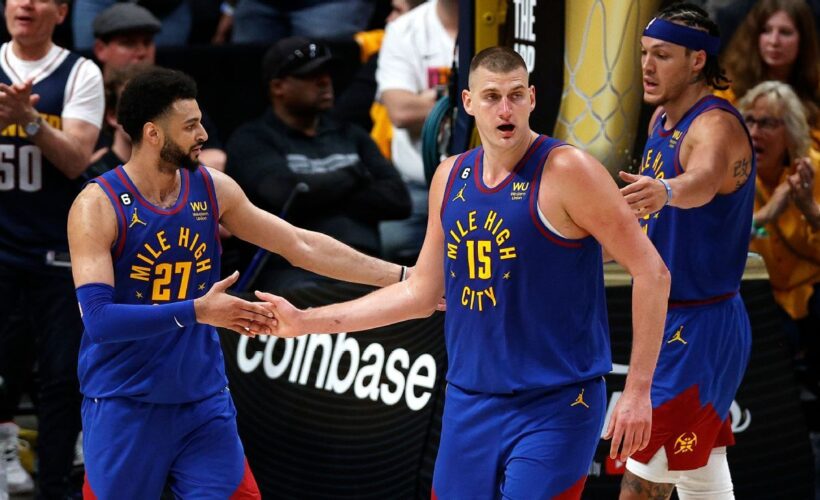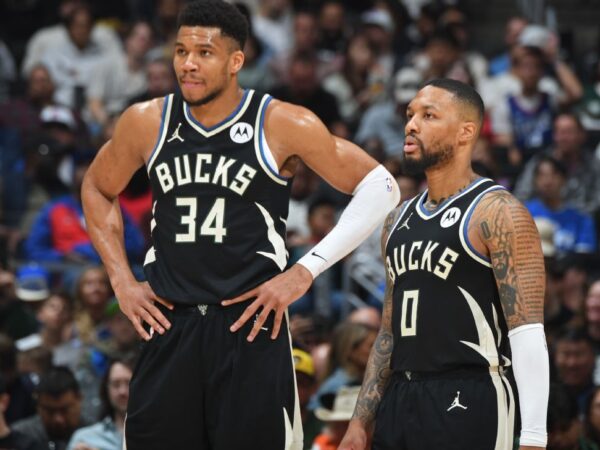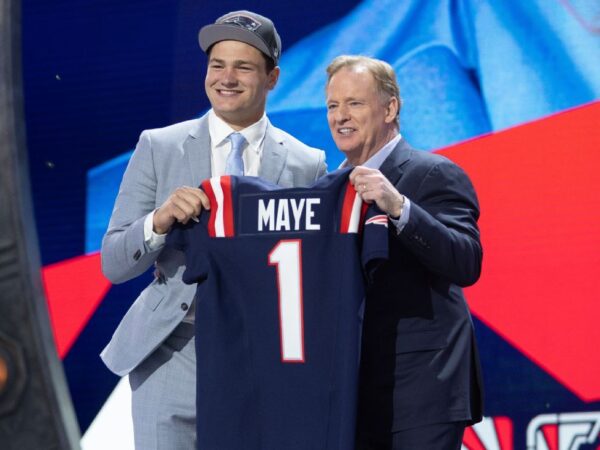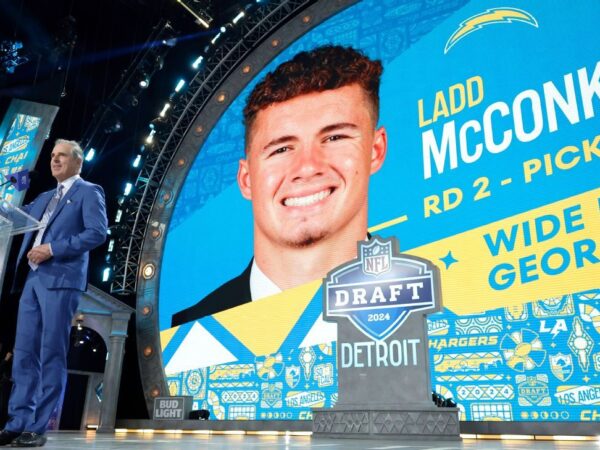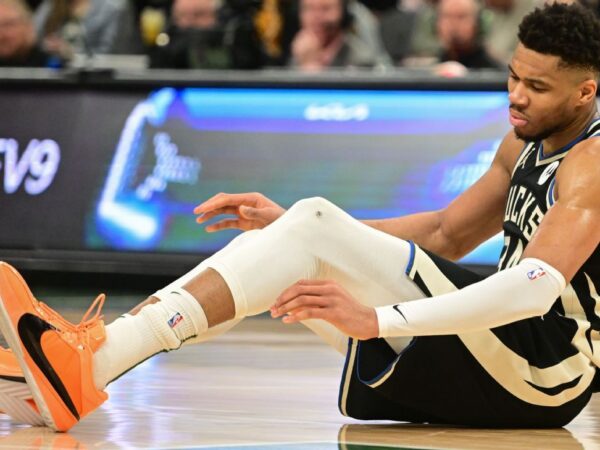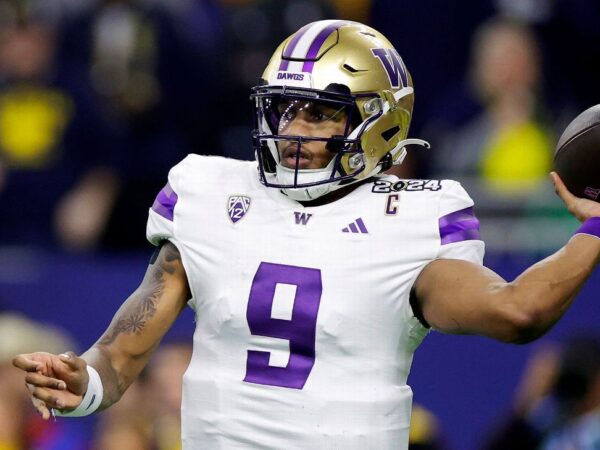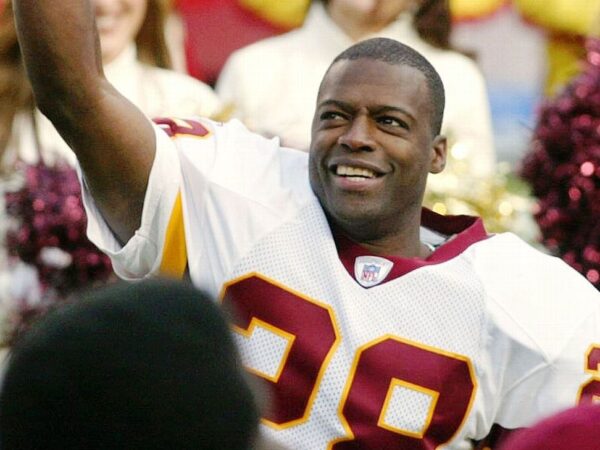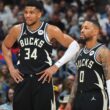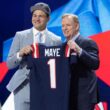LAST MONTH, THE Denver Nuggets became the fifth team to win an NBA title in as many seasons.
On its face, that is not a remarkable fact. But in NBA history, it is a truly extraordinary one. At only one other point in the league’s existence — from 1975 through 1980 — has the NBA crowned a different champion in at least five consecutive seasons.
In other words: This half-decade of parity is a period the NBA can typically only dream of. With the new collective bargaining agreement now in place through the rest of the decade, it’s what the NBA hopes will remain the case moving forward.
“Parity ends up being beneficial to smaller teams,” former Milwaukee Bucks owner Marc Lasry, who was on the labor committee that helped negotiate the agreement, said on ESPN’s “The Hoop Collective” podcast last month. “If you just think of it that way, the problem if you’re a small-market team is that people are going to want to play in New York, L.A., Miami, Dallas, any of the big cities. And so going forward, that’s going to be harder to do, from the tax aprons and just the way things are.
“All everybody wants is competition,” Lasry continued, “because the more competition there is, the more teams at the beginning of the season that can say, ‘We have a chance to win a championship,’ the better it is for the league.”
But will that actually be the case? Or have the past few years just been an anomaly that is about to be corrected? Here’s why either outcome is possible.
Why parity is here to stay
The NBA is defined by dynasties. There was George Mikan and the Minneapolis Lakers in the 1950s. There was Bill Russell’s Boston Celtics in the 1960s. There were the dueling dynastic runs of Magic Johnson’s Los Angeles Lakers and Larry Bird’s Celtics in the 1980s, followed by Michael Jordan’s Chicago Bulls dominating the 1990s.
And, since Jordan won his last NBA title in 1998, four players — Kobe Bryant, Tim Duncan, LeBron James and Stephen Curry — have combined to win 18 of the next 25 titles.
In fact, those nine players have been members of 48 of the 77 championship teams across NBA history — a staggering 62% of the total titles won.
And it was with that history in mind that both sides of the CBA negotiations made it clear that the NBA’s goal is to do everything it can to level the playing field. In doing so, the league can attempt to realize late NBA commissioner David Stern’s utopian vision: that 30 well-managed teams could all have a fair chance to compete for a championship (and make a profit).
“That was very much our intention,” NBA commissioner Adam Silver said in early July in Las Vegas, referring to the league hoping the new CBA will maintain the recent level of parity.
“I think with this new agreement, it will help to further distribute great players around the league. Now, that doesn’t ensure championships. Management still matters a lot in this league, [as does] coaching and everything else.”
What is not in dispute, though, is that the new rules have brought the league closer than ever to implementing a hard salary cap.
“Each individual thing is manageable,” an Eastern Conference executive said, referring to the new rules, “but all of it together is crippling.”
“All of it” means this: being able to combine players in trades, removing salary cap exceptions, limiting the ability to sign buyout players and freezing draft picks for teams that go over the second apron. “All of it” was designed to make teams hesitate to go far over the luxury tax, like the Golden State Warriors, LA Clippers and Brooklyn Nets have done in recent seasons.
And while the Phoenix Suns have already skyrocketed through the second apron with their trade for Bradley Beal, arguing there’s little point in easing past it and proving there isn’t, in fact, a hard cap, there’s little doubt the rules have already begun to have an impact.
The Warriors, for example, traded Jordan Poole before his four-year contract extension even kicked in partly because of a budget crunch — the kind of move they’ve never made throughout the Curry era. In fact, under the old system, the Warriors took on a long-term Andrew Wiggins contract to also get a lightly protected future first-round pick.
The Clippers saved more than $100 million by cutting Eric Gordon last month — a still useful player who went on to sign with a conference rival in Phoenix. Boston allowed Grant Williams, a rotation player during their deep playoff runs the past two seasons, to leave rather than matching his salary offer from the Dallas Mavericks.
While each individual move can be rationalized, as a collective they signify one thing: a newfound desire to watch every dollar — even for the league’s deepest-pocketed teams — and a renewed scrutiny on handing out big-money deals that could prove difficult to get away from if they go south.
“You can have a bad [contract] at $11 [million],” one Western Conference scout said. “But not at, say, $28 [million] or $29 million.”
The union has argued, though, that the new rules won’t limit spending or tamp down on creative roster building — but instead, will actually foster both.
Why? For starters, there will only be a handful of teams flirting with — or exceeding — the second apron in a given season. And with the luxury tax threshold and the first and second aprons increasing at the same rate as the cap, the belief is the issue of teams bumping up against — or exceeding them — will decrease over time.
For the vast majority of the teams, the new rules have both given them more tools to build out their rosters and made it necessary to spend more money earlier. Increased flexibility in the rules governing how much money teams need to have in a trade, for example, played a significant role in the Cleveland Cavaliers pulling off a deal for Max Strus this summer. And a new rule in place making teams reach the salary floor before the start of the season saw a bunch of teams that could’ve gone into next season hoarding cap space making moves to take on money — meaning there’s, in theory, more money for teams to spend on talent.
Ultimately, though, the new agreement is geared toward forcing teams to make hard decisions about which players to pay — the kinds of moves the Clippers, Warriors and Celtics made this offseason. And, by extension, the overall pool of talent is spread out more evenly — producing more teams capable of competing for titles.
“I think people are going to be more cost conscious in roster building,” a Western Conference executive said. “You’re just not going to give away max contracts to above-average starters who are not max-level players.”
5:19
Explaining the changes to NBA’s new CBA
Kevin Pelton and Bobby Marks break down the details of the NBA’s new CBA.
Why talent will win out
Although the two periods of championship parity in the NBA happened nearly a half-century apart, there is one common throughline: They coincided with a black swan event.
In the 1970s, it was the presence — and then collapse — of the ABA, helping create a full decade in which there wasn’t a single repeat champion, and only two teams — the Celtics and Knicks — to win multiple titles. Over the past few years, it was the COVID-19 pandemic.
The lack of revenue from parts of seasons with limited or no attendance left the salary cap essentially flat for three seasons, compacting teams’ books as salaries continued to rise at their normal rates. That, combined with a compressed schedule — jamming three seasons into the space of two calendar years — created an unprecedented level of fatigue and randomness.
Both before and after the pandemic, there were a slew of significant injuries — including to Kevin Durant (Achilles), Kawhi Leonard and Jamal Murray (torn ACLs) and Klay Thompson (who suffered both) — that played significant factors in creating the NBA’s current period of parity.
Another factor: Both Stephen Curry and LeBron James moving into the twilight of their careers. While both still are clearly among the elite players in the sport, the next dominant force to control the league over a several-year period has yet to emerge.
“I think things are cyclical,” the Eastern Conference executive said. “The reality is LeBron is older, so the guy that’s driven that for the prior 15 years isn’t in the position where he alone can will himself to championships anymore. Same with Steph.”
And now, as the league is digging out of the pandemic and its aftereffects, many of the factors that helped usher in the recent revolving door of champions are beginning to reset themselves.
After the salary cap rose by a combined $24 million over a six-season period from 2017-18 through 2022-23, it went up by over $12 million this season alone, and will likely go up by roughly another $13 million next season. If the cap continues to rise at roughly a 10% rate per season — significantly above the rate of salary raises in contracts — the cap would eclipse $200 million by the end of the decade. The fact that the luxury tax and the first and second salary cap aprons are tied to the rise in the cap would also allow for increased roster-building flexibility for teams trying to avoid them.
And while there isn’t an obvious team that’s poised to take over the NBA, no one was saying a decade ago that the Warriors were about to become the dominant team in the sport, or that Curry — and Klay Thompson and Draymond Green, for that matter — would be headed to the Hall of Fame.
Consider, then, the reigning champions. Denver’s entire starting five — Nikola Jokic, Murray, Aaron Gordon, Michael Porter and Kentavious Caldwell-Pope — is under contract for next season, with only Caldwell-Pope even hitting free agency at that point. It’s a group that has all the makings of a team that can, at least potentially, be the next one to sit atop the NBA for an extended period of time.
There’s a belief across the NBA, with Denver as a prime example, that teams will still be able to construct championship-caliber rosters around elite talent — particularly when they are on the 25% max contract coming off their rookie scale contract, as opposed to the 35% supermax stars earn later in their careers.
This past season, for example, Denver had three players — Jokic, Murray and Porter — all on the 25% max, but still had more than enough flexibility to build a deep roster around them. But as Jokic now graduates to a 35% supermax starting this season, the Nuggets will have tougher and tougher calls to make — like, for example, declining to pay Jeff Green, a key piece from last year’s title team, and attempting to replace both Green and Bruce Brown with youngsters on rookie-scale contracts.
“I think that’s great, that there’ve been five different teams [to win championships],” Silver said, “but at the same time, I don’t mind, and I don’t think fans mind, when you have teams repeat as champions. I think what they focus on is how those teams were formed.
“And I think that when there’s a sense that the team is, it’s done through the draft, through trades, that it’s through proper development of players and that team can then continue to win.”
And while roster-building gets more difficult as players move onto supermax contracts, the Lakers, Warriors and Heat have all either won the title or made the Finals with 35% max deals on their books, showing that there’s a path — albeit a harder one — to winning that way.
“It will be very difficult to carry three max players,” one league source said. “You better be damn sure you like those three guys, and you have to be really smart about constructing the rest of your roster.”
Very difficult, however, isn’t impossible.
And as the NBA steps into its new CBA in the midst of a rare period of parity, it remains to be seen whether it is here to stay, or a brief moment in time before the league’s typical dynastic reality returns.
Source:ESPN

